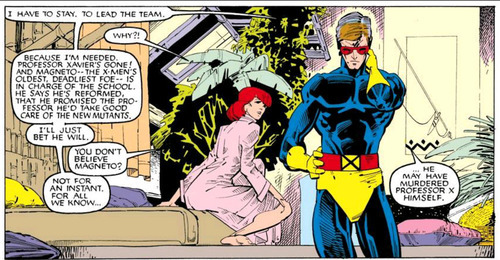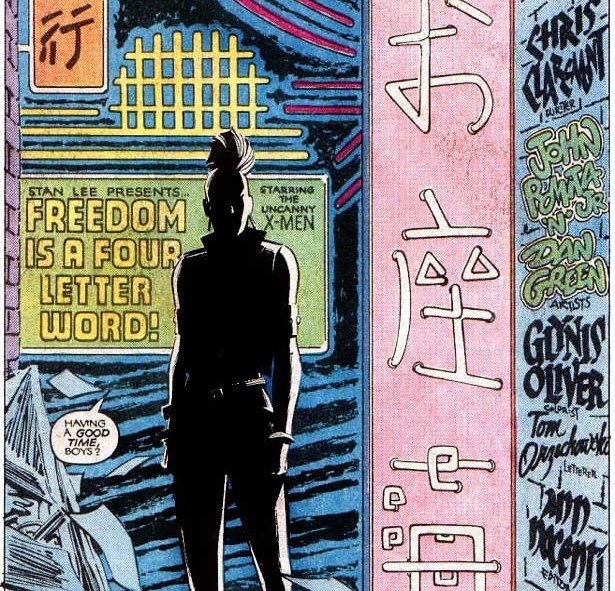One of Claremont’s goto strategies for character-building revolves around creating conflict out of character dualities in which their superpowers put them at odds with their personal goals and ambitions, ultimately distancing them from their own sense of humanity. #xmen 1/7 

This strategy is very very old. Nietzsche identified something similar in Ancient Greek Tragedy. It’s also quite foundational to Marvel (and other) comics of the era, most easily recognized in the Spider-Man aphorism of “with great power…..” 2/7 

Claremont’s approach, however, is individualized. So Logan is animal/man, Storm is goddess/woman, Kitty is child/adult, Colossus is muscle/imagination. Havok is raw power/pacifism, Dazzler is fame/normality, Cyclops is mission/well-being. On and on. 3/7 

Storm’s powers dehumanize her. Kitty’s powers put her into dangerous/mature situations. Colossus’s require him to be violently physical (same w Havok and Logan). Dazzler’s cause her to (basically) rock too hard and shine too bright - Cyclops to lose himself in superheroism. 4/7 

These dualities place the character in the position of sacrificing personal desires, goals, and ambitions in order to serve their community through their powers, a classic and deeply relatable question that we all have to ask ourselves all the time (minus the superpowers). 5/7 

The powers are the pivotal point here, though – Claremont’s X-Men are each specifically at odds with their specific superpowers – there’s a fundamental misalignment that takes the abstract burden of responsibility and personalizes it. 6/7 

Put together, this characterization through dualism is effective at establishing the martyrdom of the characters, at creating rich, individual interior conflicts, and of giving each X-Man a specific goal/motivation that they are forced to sacrifice for their heroic virtue. 7/7 

• • •
Missing some Tweet in this thread? You can try to
force a refresh






















